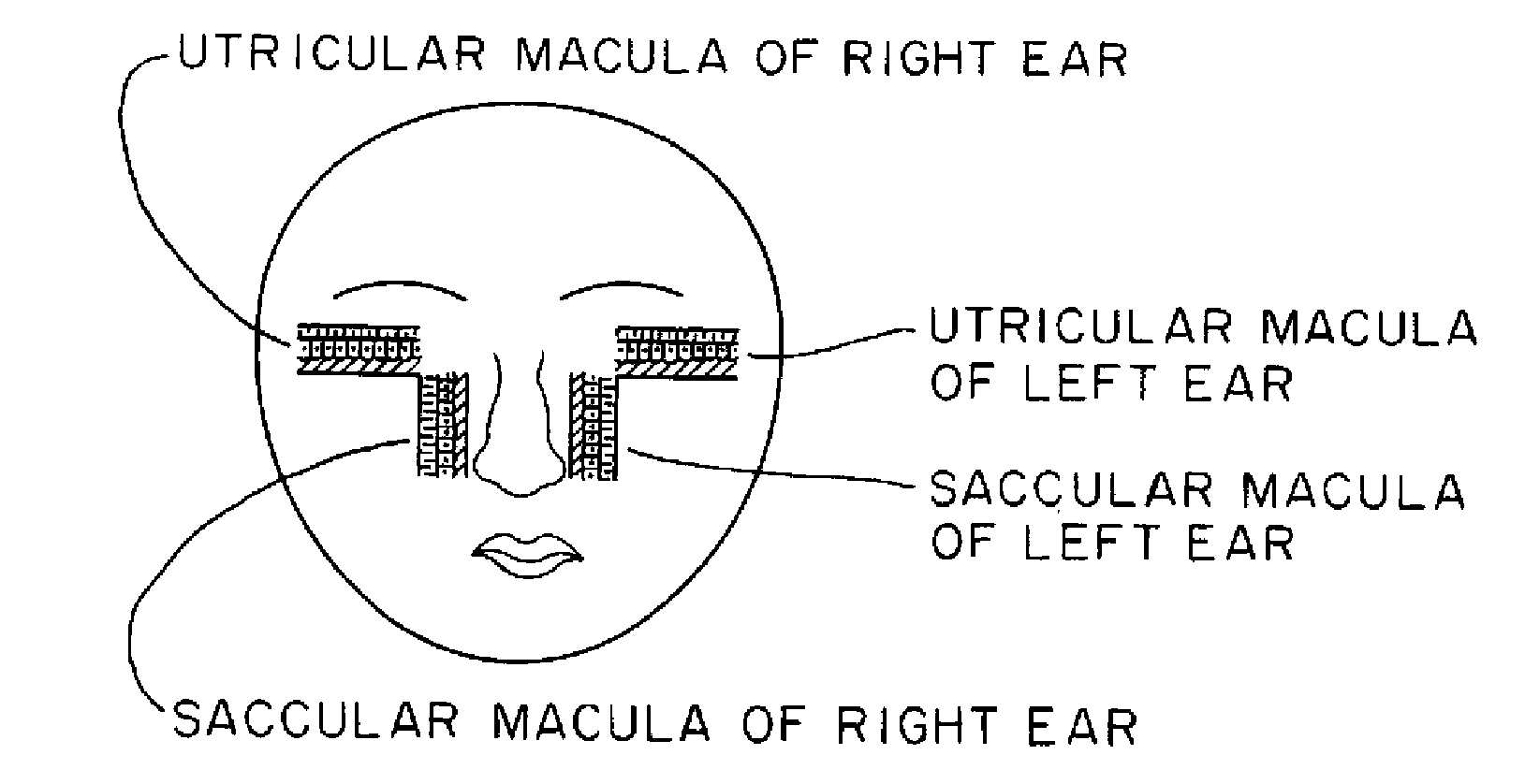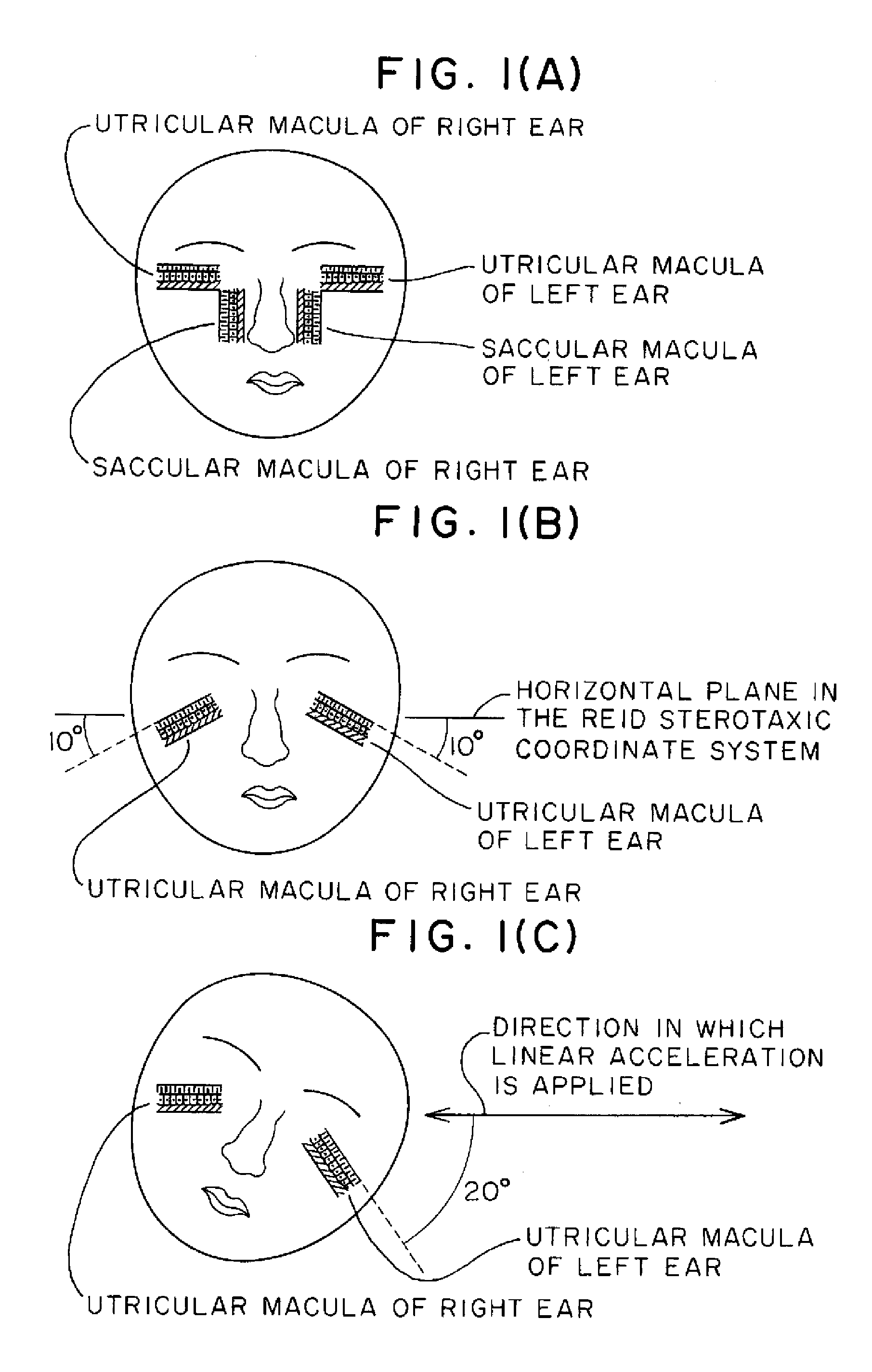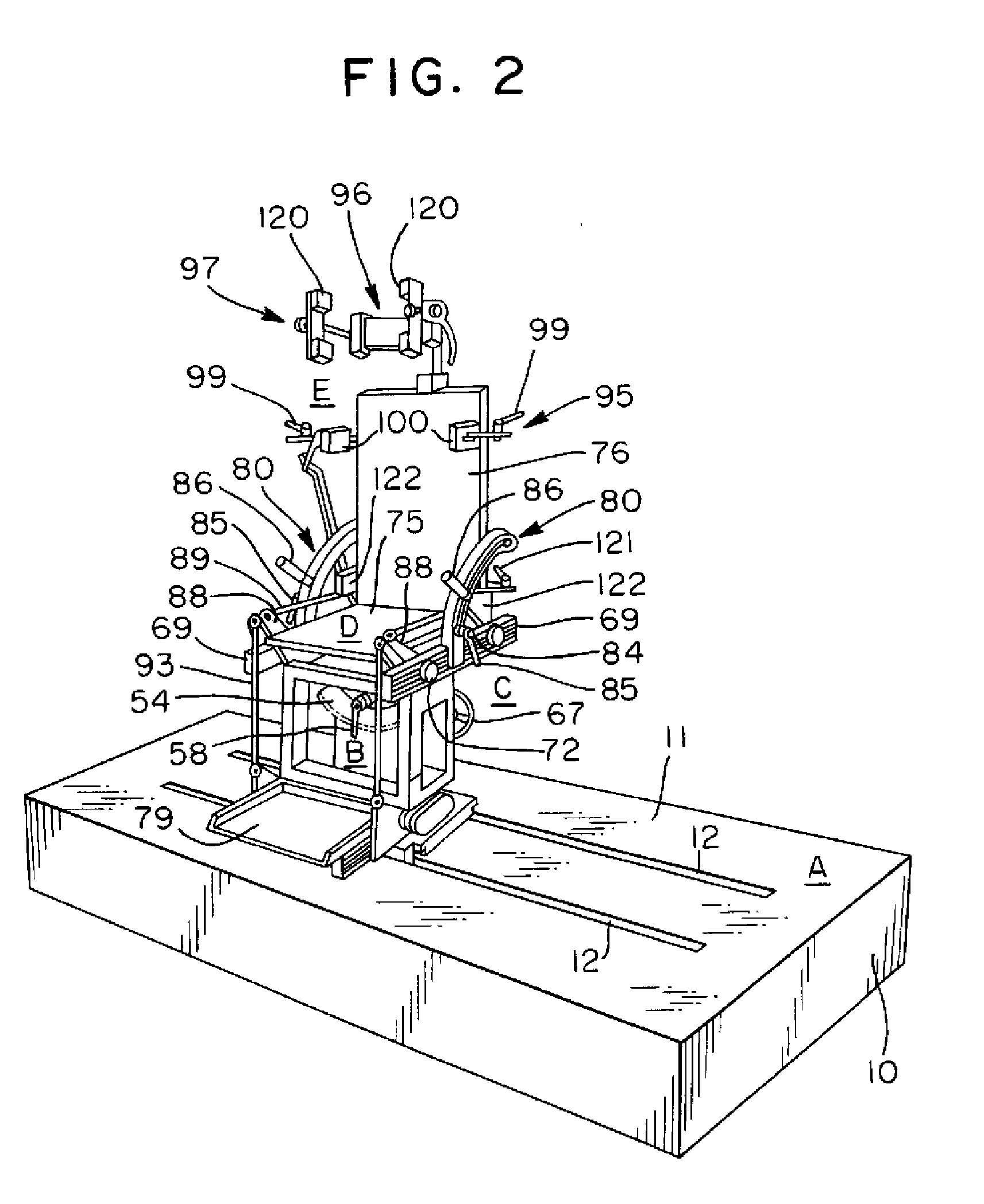Methods and apparatuses for stimulating otolith organs by linear acceleration
a technology of linear acceleration and otolith organs, which is applied in the field of methods and apparatuses for stimulating otolith organs by linear acceleration, can solve the problems of inability to subject the utricular maculae to different stimuli, and method is inappropriate for subjecting them to different stimuli
- Summary
- Abstract
- Description
- Claims
- Application Information
AI Technical Summary
Benefits of technology
Problems solved by technology
Method used
Image
Examples
Embodiment Construction
[0059]Referring next to the accompanying drawings, embodiments of an apparatus and a method for stimulating otolith organs according to the present invention are described. It should be noted that the present invention is not limited to the illustrated embodiments.
[0060]The stimulating method according to the present invention belongs to methods for stimulating otolith organs by linear acceleration to cause complementary eye movements, and it comprises the steps of: tilting otolith organs on one side of a subject from the head's horizontal plane in the Reid stereotaxic coordinate system; applying linear acceleration to the head of the subject in the tilted position; and applying different linear acceleration stimuli derived from the linear acceleration to left and right otolith organs, respectively. Applying different stimuli to left and right utriculi or sacculi, respectively, makes it possible to measure individual functions of the left and right otolith organs.
[0061]The stimulati...
PUM
 Login to View More
Login to View More Abstract
Description
Claims
Application Information
 Login to View More
Login to View More - R&D
- Intellectual Property
- Life Sciences
- Materials
- Tech Scout
- Unparalleled Data Quality
- Higher Quality Content
- 60% Fewer Hallucinations
Browse by: Latest US Patents, China's latest patents, Technical Efficacy Thesaurus, Application Domain, Technology Topic, Popular Technical Reports.
© 2025 PatSnap. All rights reserved.Legal|Privacy policy|Modern Slavery Act Transparency Statement|Sitemap|About US| Contact US: help@patsnap.com



